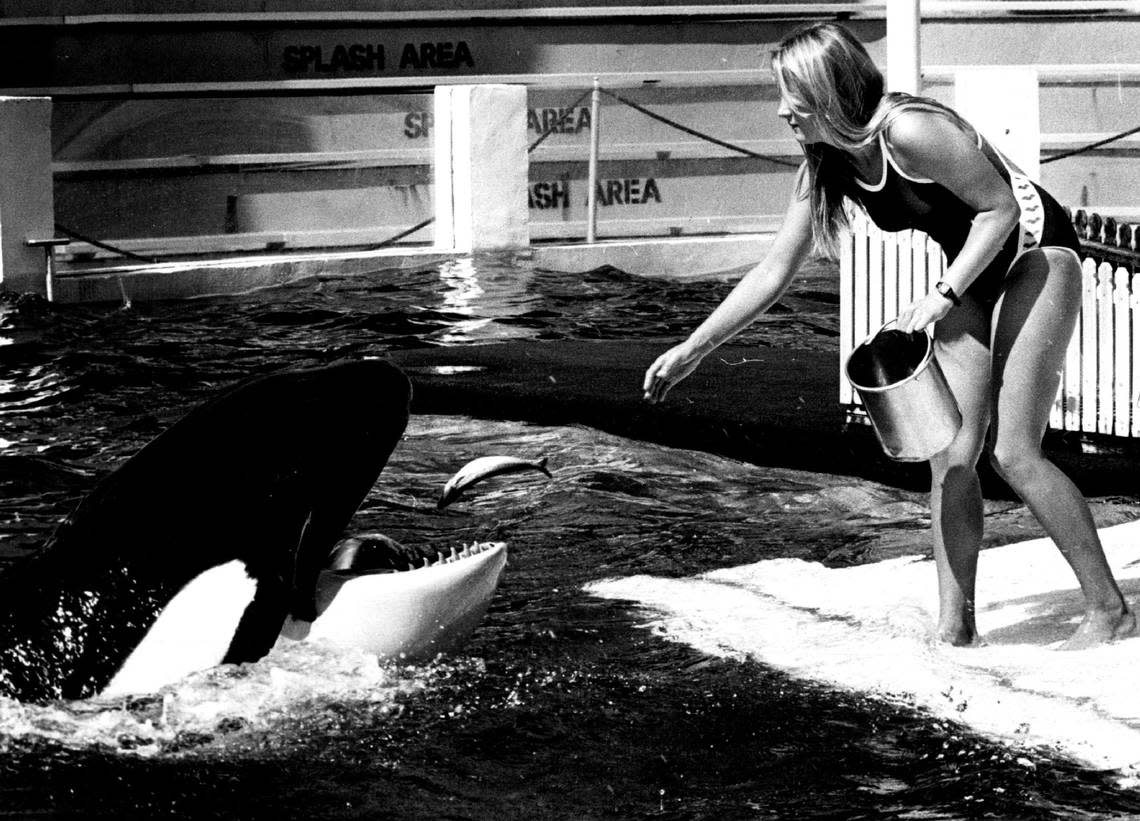Lolita the killer whale is remembered by her favorite humans. ‘She’s swimming free’
Lolita never starred in a network TV show like her Seaquarium neighbor Flipper the dolphin or Gentle Ben the Everglades bear.
But Lolita the killer whale had fans and advocates, millions of them, the world over. They delighted in her skills and they fought for her freedom.
She was also called Tokitae — Toki for short — the regal name given the orca by a group of indigenous people in Washington state that had advocated a return to her native waters. But she became best known as Lolita, the performing star at the Miami Seaquarium.
Lolita, who continued performing until she was retired in 2022 due to health issues, died Friday. She was about 57.
KNOW MORE: Lolita had chronic health problems in her last years. This one finally claimed the orca
Plans had been in motion to move her out of her Miami theme park to perhaps reunite with her mother who had not seen her since her daughter was 4 and had grown to 7,000 pounds and 20 feet long. Since her capture in 1970, Lolita lived in a 20-foot-deep tank 3,354 miles away from her family, who may still be in the waters of Puget Sound in Washington state.
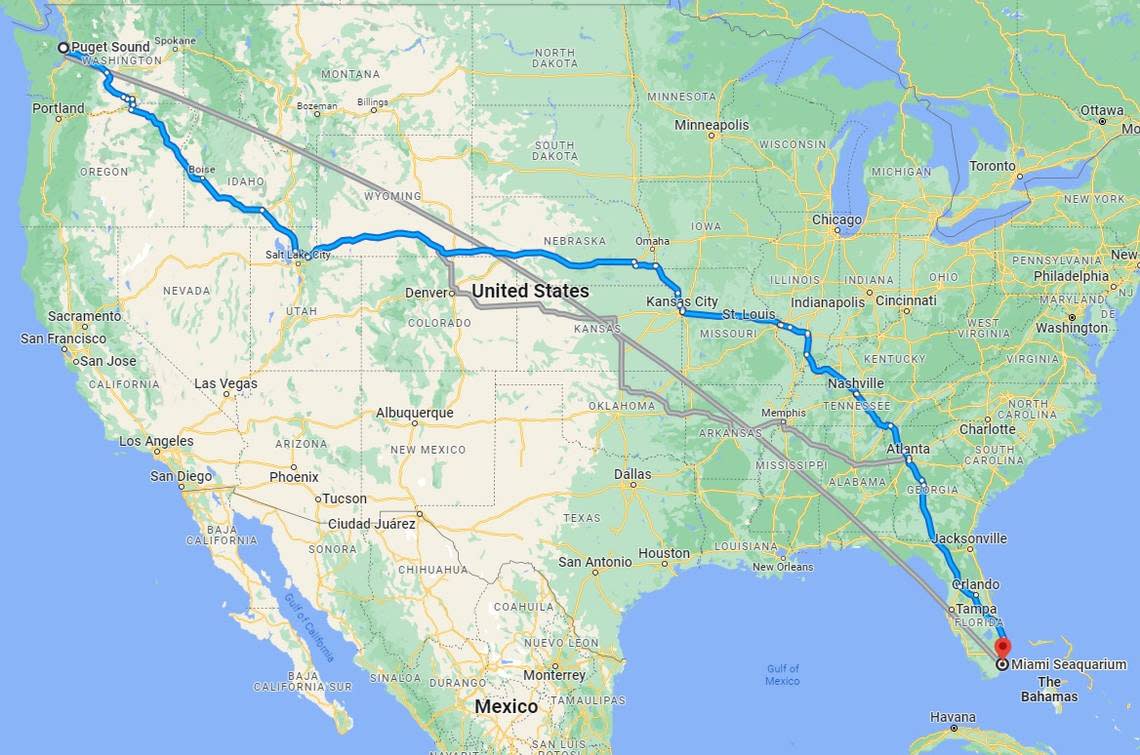
Friends of Lolita, a whale freedom advocacy group, believe Lolita’s mother, at 89, is still swimming with a wild pod in the Pacific Northwest. The Center for Whale Research says that an orca’s lifespan is similar to that of humans. And some, like their land-lubbers on legs, can live to over 100.
“Toki was an inspiration to all who had the fortune to hear her story and especially to the Lummi Nation that considered her family,” officials at the Miami Seaquarium posted on Facebook. “Those of us who have had the honor and privilege to spend time with her will forever remember her beautiful spirit.”
Lolita’s trainers believe the cause of death was a renal condition —failing kidneys.
For two days Lolita had “serious signs of discomfort, which her full Miami Seaquarium and Friends of Toki medical team began treating immediately and aggressively,” the Seaquarium said. Lolita also battled pneumonia in 2022, according to PETA.
Lolita’s early days
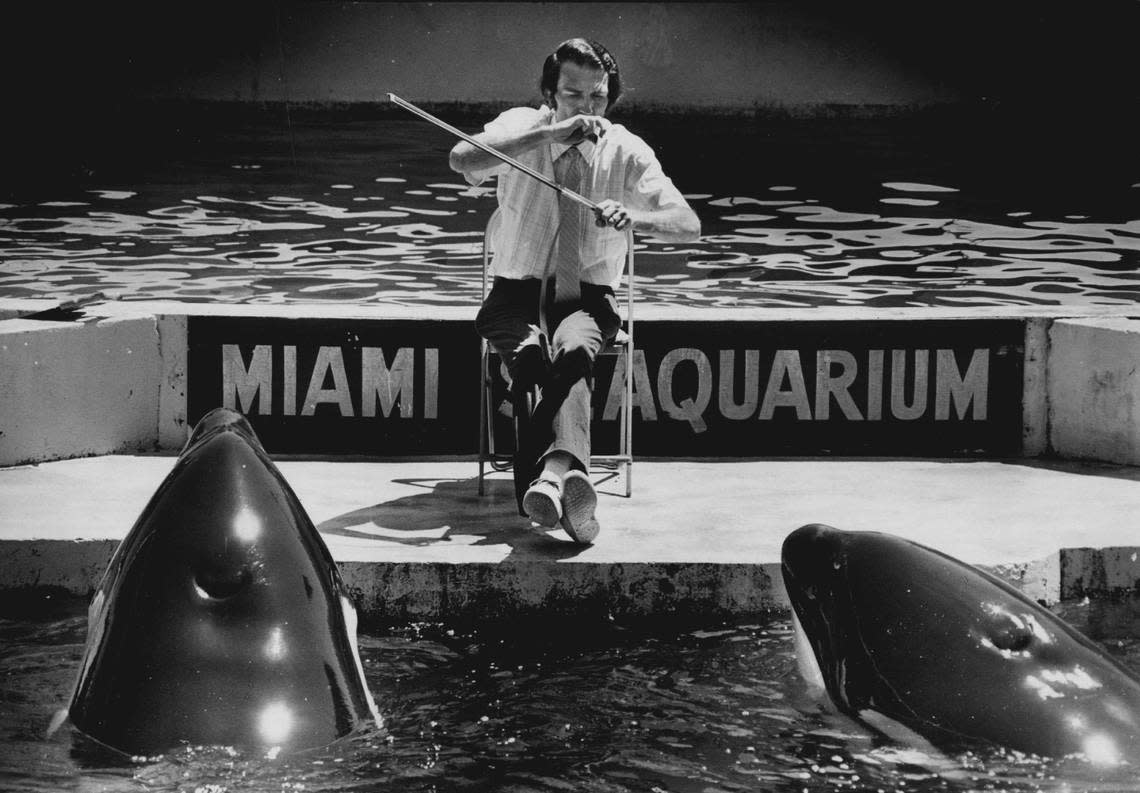
Lolita was born in Puget Sound sometime in 1966, near the middle of Flipper’s three-season run on television from the waters of the Miami Seaquarium. The various bottle-nosed dolphins that portrayed the “Flipper” title character have since died.
When Lolita arrived in Miami in 1970 after her capture, she began performing with the Seaquarium’s star attraction at the time, Hugo the killer whale, who had also been captured in the Pacific Northwest in 1968 at age 3. Hugo and Lolita performed together for 10 years. Hugo died at age 15 in March 1980 of a brain aneurysm. Lolita has been alone in her tank since — 43 years — visited by her trainers, vets and generations of visitors.
Lolita became more than a park’s moneymaking “star attraction,” though.
Lolita as a rite of passage
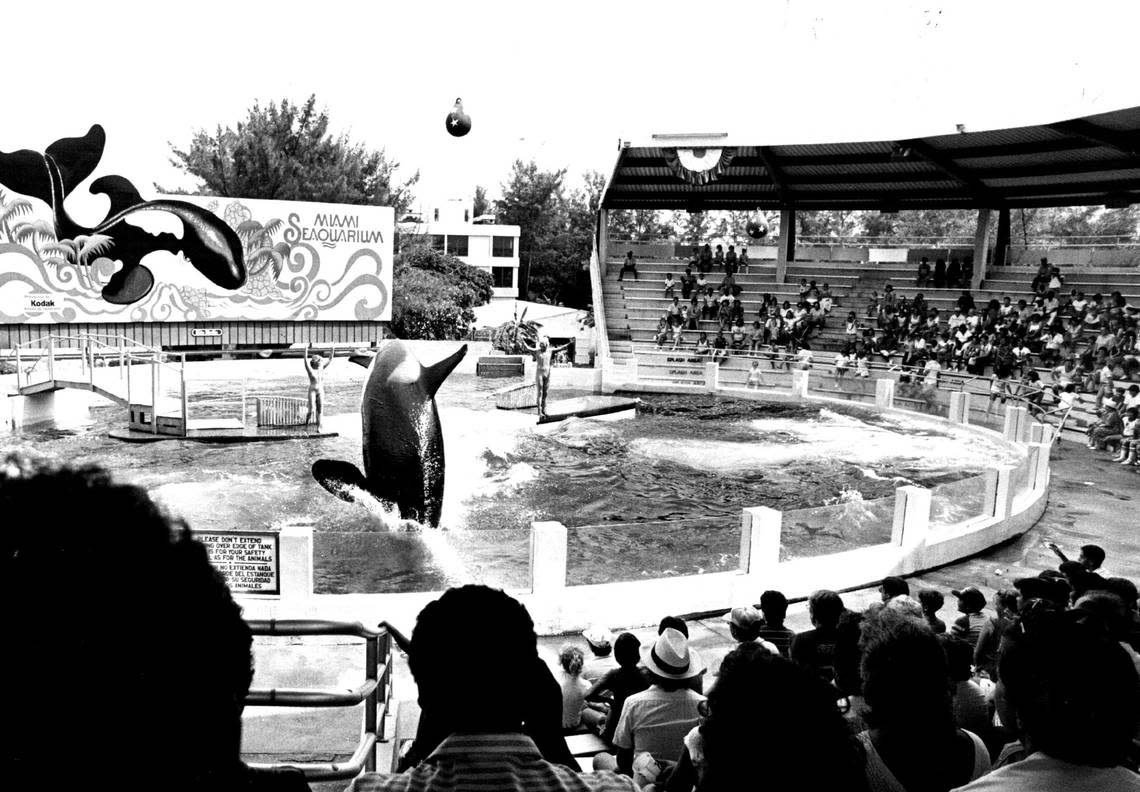
Unwittingly, the 4-year-old Lolita grew to become a rite of passage for countless people.
There were the summer campers and local elementary schoolchildren whisked to the Rickenbacker Causeway attraction on field trips to visit the mammal billed with the fearsome handle, “Lolita, the Killer Whale.”
The schoolkids left charmed —and maybe also a little wet from the orca’s jumps and splashdowns. Lolita wasn’t so scary, after all.
There were the parents who dutifully bought souvenirs for their kids that boasted her image. Who, of a certain age, can forget the smell of the freshly poured plastic that melted and hardened into shape before eager eyes from machine-pressed molds — “Only 25 cents!” — that delivered lasting mantelpiece mementos of Lolita and her mate, Hugo, way back in the 1970s?
JoAnn Wonsik, who grew up in Miami and now lives in Cedar Key on the northwest coast of Florida, remembers going to the park in her youth with fellow Floridians.
“I’m so sorry to hear about Lolita. She surely was an icon, not only at the Seaquarium part of Miami [but for the] many tourists that have passed through Miami. It was a sure entertainment for them to see Lolita at the Seaquarium,” Wonsik, 69, said in an email to the Miami Herald.
Miami-Dade County Mayor Daniella Levine Cava spoke to locals and visitors alike when she posted a tribute to Lolita on her social media pages soon after Lolita’s death.
“Alongside the many Miamians who grew up visiting her, the generations of activists around the world that were inspired by her story, and the caretakers who remained dedicated to her until the end — today, we say our final goodbye to our beloved Toki. Our shared goal has been to increase transparency, create accountability, and strengthen collaboration at the Miami Seaquarium for the benefit of the animals in their care.”
Lolita’s favorite treat
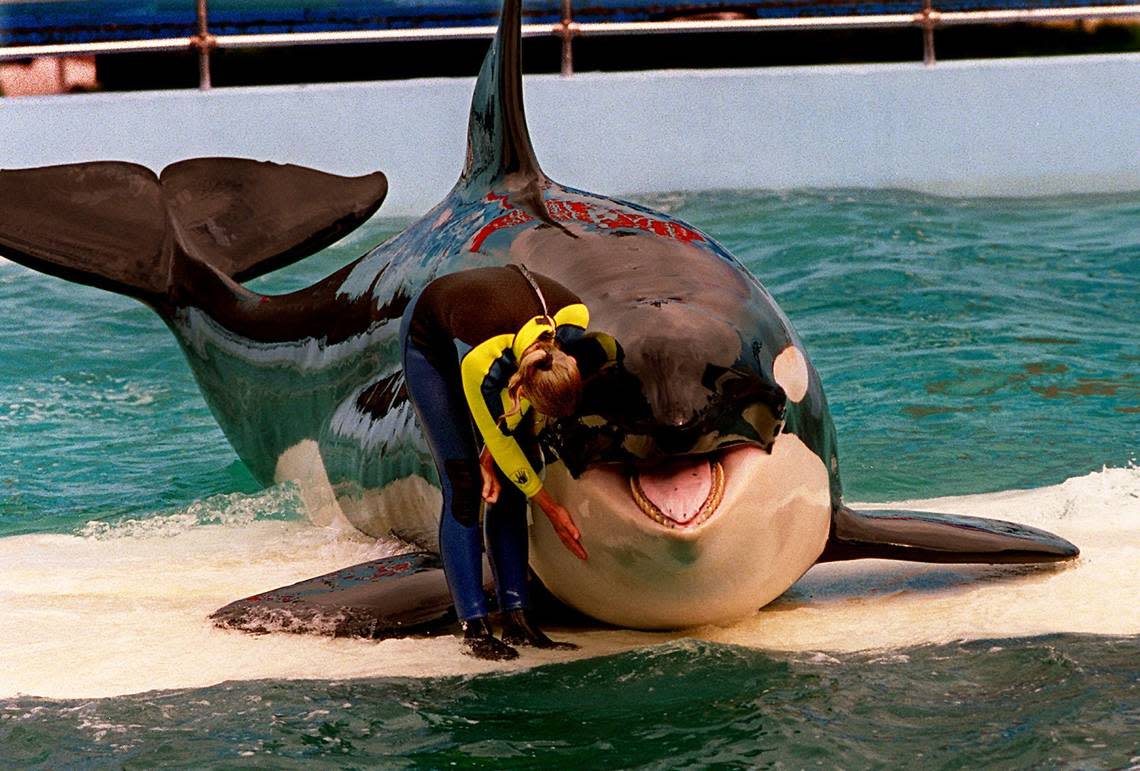
One of Lolita’s favorite humans remembers one of Lolita’s favorite treats.
A stroke on the tongue.
Renee Sweeney, a former show consultant at the Miami Seaquarium in the period of Wometco Enterprise CEO Arthur Hertz’s ownership, recalled early morning arrivals to the park at work long before the day’s crowds descended.
She’d head over to the whale tank. Lolita knew what to expect.
Lolita “would see me and swim right over to wherever I was standing, breaching upward, opening her massive jaws, wide. I always obliged by stroking her huge tongue, and saying sweet good mornings to Toki. She loved having her tongue stroked. It was such a wonderful way to start my day,” Sweeney wrote on Facebook.
Like cats and dogs, Lolita gravitated to her favorite people. Sweeney was blessed to be among Lolita’s picks, she wrote.
“No matter what name you knew that beautiful orca by, Toki was special. Sweet, loving, choosing who were her favorite people. I was lucky Toki counted me as one of those people. I never trained her or fed her fish. All I did was was say ‘good morning’ to an amazing animal, and rub her tongue in the the quiet of the early morning. I will miss that whale. I’d like to think she is finally swimming free, somewhere, with other members of her pod who have also moved on from this earth.”
Free Lolita
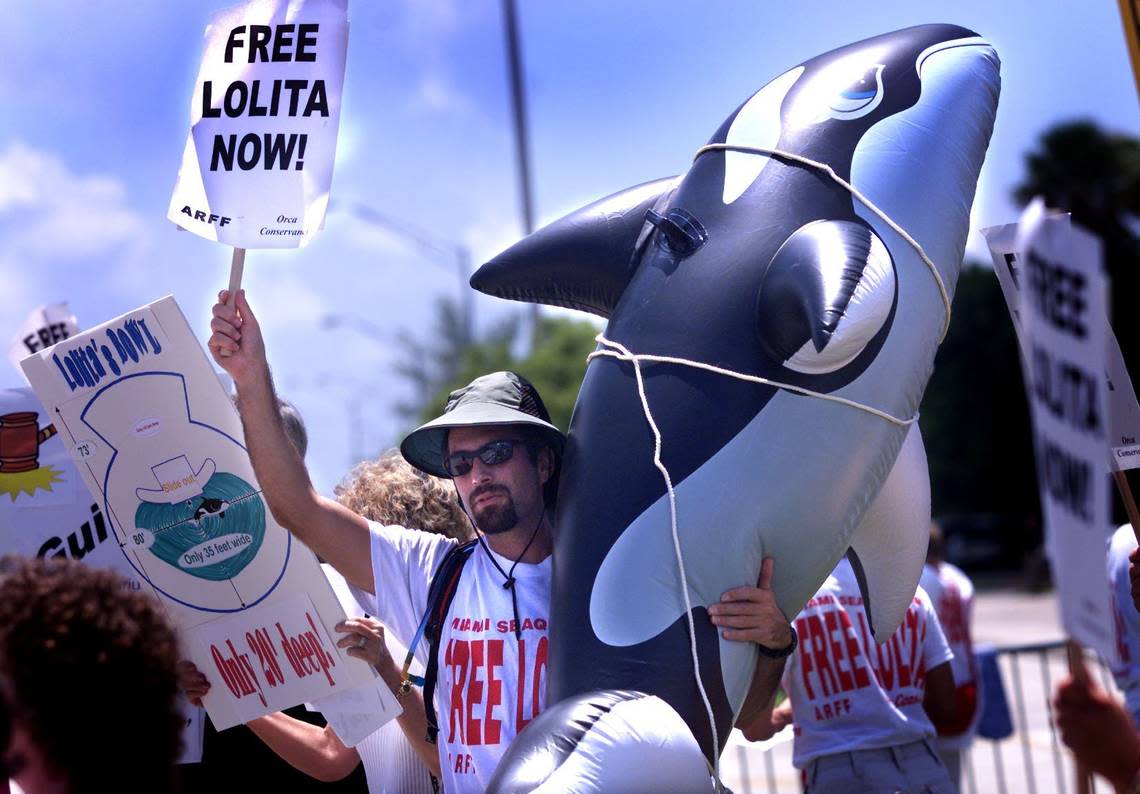
Sweeney wasn’t alone in wishing freedom for Lolita — and in the orca’s lifetime.
Lolita was the focus of a “Free Lolita” campaign, inspired by movies like “Free Willy” in 1993 and the 2013 documentary “Blackfish” that focused on SeaWorld’s Orca Tilikum. Lolita was the face of PETA-led protests in front of the Seaquarium for years.
PETA posted Friday: “She deserved a life in the ocean with her family — a life of freedom and love. We can all honor her memory by never visiting parks that exploit animals like her.”
She deserved a life in the ocean with her family—a life of freedom and love. We can all honor her memory by never visiting parks that exploit animals like her. #RIPLolita pic.twitter.com/7sZ78kwtJV
— PETA (@peta) August 18, 2023
Lummi Nation, a group that also advocated on behalf of Lolita, honored her on Facebook hours after her death. “Our hearts are with all those impacted by this news; our hearts are with her family.”
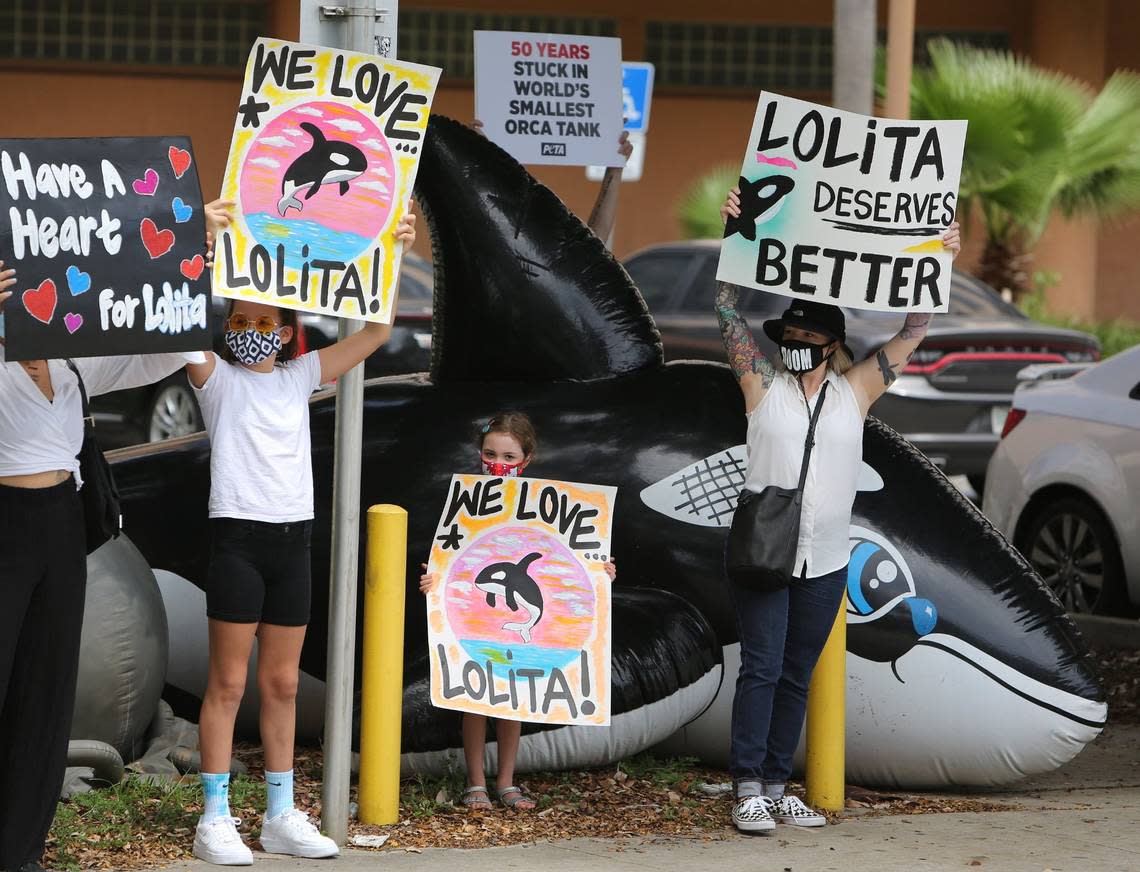
Survivors and services
#BREAKING: @MiamiSeaquarium announces the death of beloved killer whale, #Lolita, also known as #Toki.
Her body, wrapped in a tarp, is being moved by crane right now.
Officials believe a renal condition caused her passing.@nbc6 #Miami #Florida #SouthFlorida pic.twitter.com/dzxi4wLe87— Ryan Nelson (@RyanNelsonTV) August 18, 2023
Lolita’s survivors include dozens of trainers over the years, the activists who fought to free her, millions of visitors, locally and internationally, who were charmed by her for more than 50 years and, likely, her mother in the waters of Washington.
Lolita’s body was transported to the University of Georgia for a necropsy.
Plans for a burial or final goodbye are in the planning stages, Pritam Singh, founder of the nonprofit Friends of Lolita, told the Miami Herald Saturday.
Private groups have staged funerals and protests and vigils over the weekend.
